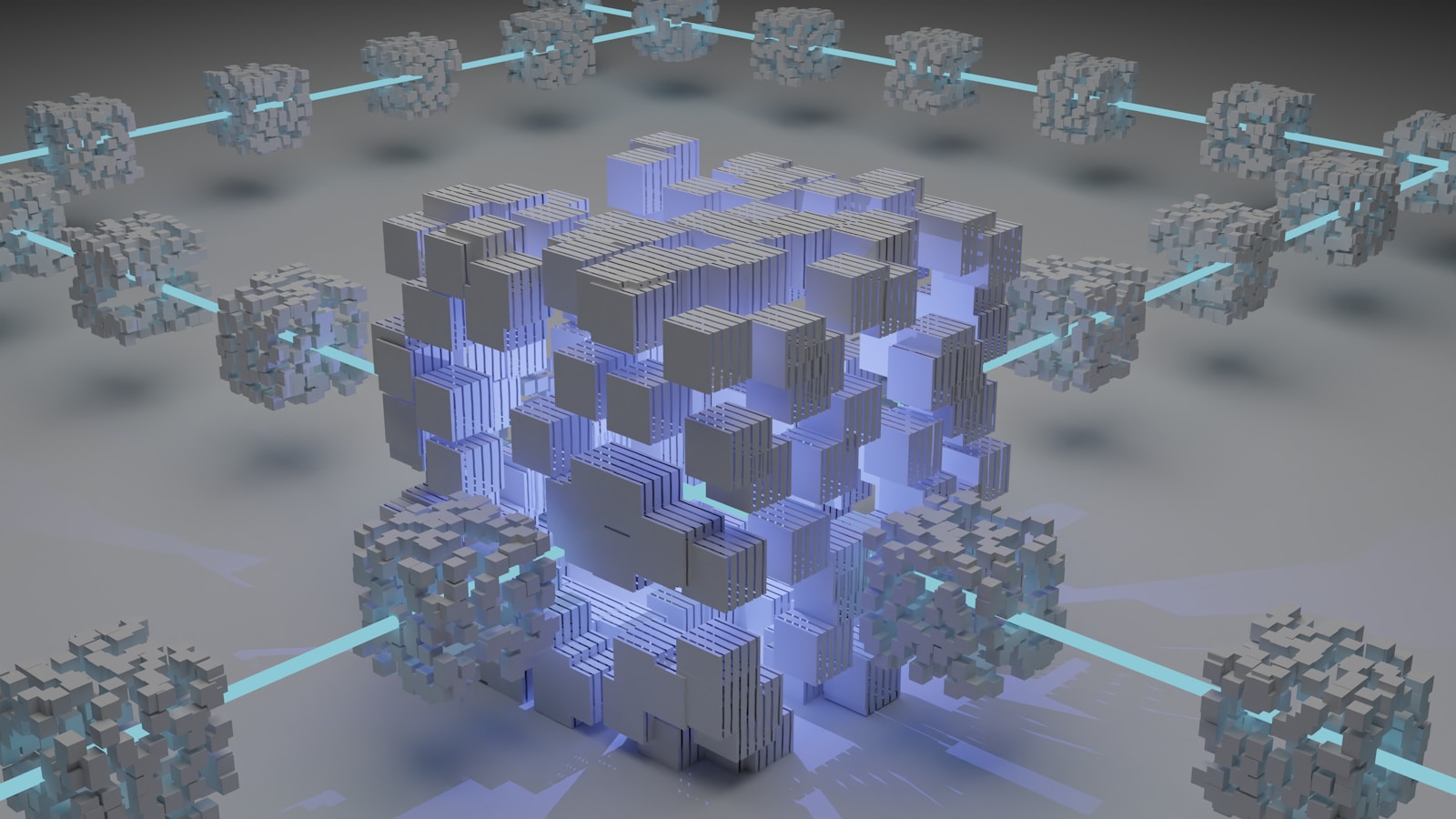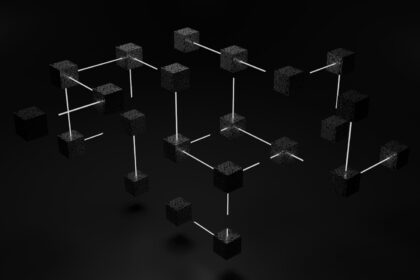Anyone can build decentralized applications without needing approval from a central authority, thanks to unrestricted access protocols. This approach allows creators to contribute directly to the ecosystem, accelerating improvements and expanding use cases with minimal barriers.
Open-source ledgers provide transparent environments where contributors collaborate on secure, tamper-resistant solutions. The absence of gatekeepers ensures that novel ideas and tools emerge naturally from the community, fostering diverse and resilient networks.
By leveraging public networks accessible worldwide, developers gain real-time feedback and shared resources that streamline iteration cycles. This collaborative atmosphere empowers both novices and experts to experiment freely while maintaining trust through cryptographic verification methods.
Permissionless Innovation: Open Blockchain Development
To effectively build decentralized systems, unrestricted entry to network protocols is indispensable. This approach allows developers worldwide to contribute without centralized approval, accelerating progress and diversifying applications. When anyone can access the underlying codebase and test novel ideas freely, it sparks a continuous cycle of enhancement that traditional closed environments rarely achieve.
Decentralized ledger platforms benefit immensely from this model by enabling peer-to-peer collaboration on improvements and new features. For instance, Ethereum’s public networks permit developers to deploy smart contracts without gatekeepers, resulting in thousands of unique decentralized applications (dApps) spanning finance, gaming, and identity management. This open participation drives creativity while maintaining transparency through consensus mechanisms.
How Unrestricted Access Drives Technological Progress
The architecture supporting these platforms consists of distributed nodes validating transactions based on shared protocols stored openly in repositories like GitHub. Developers can clone these repositories, experiment with modifications locally or on testnets, then propose updates via community governance processes such as Ethereum Improvement Proposals (EIPs). This framework preserves security while encouraging diverse experimentation.
Consider the rise of Layer 2 scaling solutions as a case study: projects like Optimism and Arbitrum emerged due to the ability for independent teams to innovate beyond base-layer constraints. By building atop foundational ledgers without permission barriers, they introduced throughput enhancements critical for mainstream adoption. These advancements highlight how unhindered development pathways enable rapid iteration responding directly to user demands.
Such ecosystems thrive because contributors are not limited by proprietary restrictions or exclusive partnerships; instead, their incentives align around enhancing network utility and robustness. Open-source codebases paired with decentralized consensus ensure that no single entity monopolizes control, reducing risks of censorship or stagnation. This democratized environment cultivates an extensive developer base continually refining protocols and tooling.
For newcomers eager to engage with distributed ledger technology creation, starting with accessible frameworks is advisable. Platforms like Polkadot offer modular architectures where individuals can experiment with parachains and runtime upgrades seamlessly. Tutorials often recommend setting up local nodes using Docker containers followed by deploying simple smart contracts via tools such as Remix IDE or Hardhat scripts–practical steps bridging theoretical understanding with hands-on application.
How Permissionless Networks Operate
To build a decentralized system that allows anyone to participate without restrictions, the network relies on a distributed ledger maintained collectively by numerous independent nodes. This architecture ensures that every participant can access the data and contribute to its maintenance, creating a trustless environment where central authorities are unnecessary. The absence of gatekeepers means that anyone can join the network, submit transactions, or propose changes to the protocol.
Access mechanisms in such networks depend on cryptographic principles and consensus algorithms, which validate transactions and secure the shared database. Examples include proof-of-work and proof-of-stake methods, which incentivize participants to behave honestly by aligning economic rewards with network health. Because these systems operate transparently and openly, they enable continuous improvement driven by community contributions rather than centralized control.
Technical Foundations of Open-Access Systems
The core technology enabling unrestricted participation is a replicated ledger stored across multiple computers worldwide. Each node independently verifies incoming data against established rules before appending it to its copy of the ledger. This process eliminates single points of failure and censorship possibilities because no one entity controls the transaction history or can alter previous records unilaterally.
A real-world illustration can be found in networks like Ethereum, where developers deploy smart contracts–self-executing programs–on a platform accessible to all users. These contracts automate complex interactions without intermediaries and allow for innovative applications like decentralized finance (DeFi) or token issuance. Anyone with technical knowledge can write code, test it in public environments, and launch applications without needing approval from any centralized authority.
Development within these ecosystems is community-driven and transparent. Contributors propose protocol upgrades through open discussions and implement them via agreed-upon governance models. This collective approach accelerates technological advancement while maintaining security standards through rigorous peer review processes. For example, Bitcoin Improvement Proposals (BIPs) undergo extensive evaluation before integration into the main network software.
In summary, these decentralized frameworks operate by allowing unrestricted entry paired with robust validation protocols that maintain system integrity. By removing barriers to participation while ensuring consensus among diverse actors, they cultivate an environment conducive to continuous creation and refinement of digital infrastructure accessible globally.
Building DApps Without Approval
Anyone can create decentralized applications on public distributed ledgers without needing prior authorization. This open access removes traditional gatekeepers, allowing creators to deploy software directly onto the network. As a result, developers benefit from an environment where new solutions and services emerge rapidly, supported by the underlying peer-to-peer infrastructure that ensures transparency and resilience.
The ability to launch applications freely relies on smart contract platforms that provide standardized programming interfaces. These protocols enable code execution in a trust-minimized setting, guaranteeing that once deployed, the logic operates as intended without external interference. Consequently, this fosters a space where experimentation is encouraged, and diverse use cases–from finance to identity management–can flourish independently.
Technical Foundations Enabling Decentralized App Creation
The architecture supporting such ecosystems is built upon consensus mechanisms like Proof of Stake or Proof of Work, which validate transactions without centralized control. Developers utilize development kits and integrated tools to write, test, and deploy their programs directly onto nodes spread globally. Access to node networks and data stores is unrestricted, meaning anyone with sufficient knowledge can contribute new functionalities or improve existing ones.
Consider examples like Ethereum’s ERC-20 token standard facilitating seamless issuance of digital assets or platforms like Polkadot enabling cross-chain interoperability without requiring permission from central authorities. These innovations demonstrate how open participation drives continuous improvement and diversification within decentralized systems. By removing barriers associated with approval processes, the ecosystem nurtures creativity while maintaining security through cryptographic guarantees and transparent governance models.
Security Challenges in Open Chains
The accessibility of decentralized networks allows anyone to participate, which creates unique security challenges that must be addressed thoughtfully. Systems without gatekeepers encourage continuous contribution and innovation but also expose vulnerabilities exploited by malicious actors. Understanding the implications of unrestricted entry is critical for maintaining network integrity and protecting assets.
One major concern arises from the fact that open access means no single entity controls who can build or modify the protocol’s components. This characteristic increases risks such as Sybil attacks, where a bad actor generates numerous identities to manipulate consensus mechanisms. Developers rely on cryptographic safeguards and economic incentives to mitigate these threats; however, these measures are not foolproof and require constant refinement.
Key Security Risks in Decentralized Networks
Among the most prevalent risks are 51% attacks, smart contract vulnerabilities, and front-running exploits. A notable example is the 2016 attack on The DAO, where flaws in contract code allowed hackers to drain millions in cryptocurrency. Such incidents highlight how transparent environments with open source code can still harbor hidden bugs that become attack vectors.
- Consensus Manipulation: Without permissioned control, adversaries may attempt to control enough nodes to rewrite transaction history or double-spend funds.
- Code Exploits: Since protocol rules are often publicly accessible, any coding errors or backdoors can be discovered and abused rapidly.
- Eclipse Attacks: Isolating nodes by controlling their incoming connections enables attackers to feed false data and disrupt network operations.
To counter these issues, many projects implement robust peer review processes combined with formal verification techniques. For instance, some platforms require multi-layered audits before updates go live, reducing human error. Additionally, community-driven bug bounty programs incentivize independent researchers worldwide to identify weaknesses early.
Another practical approach involves layered security architecture–combining cryptographic proofs like zero-knowledge protocols with economic deterrents such as staking requirements. These strategies discourage dishonest behavior by increasing costs for potential offenders while preserving broad participation freedom.
Overall, securing a system where anyone can contribute demands vigilance at every stage: from initial design through deployment and ongoing maintenance. Encouraging collaboration between developers and users fosters an environment where vulnerability disclosure becomes part of collective responsibility rather than a threat. Through this shared effort, decentralized systems continue evolving toward safer ecosystems without sacrificing openness or inclusivity.
Incentive Models for Developers: Conclusion
To sustain a thriving ecosystem where anyone can build on decentralized networks, incentive structures must prioritize equitable access and tangible rewards tied directly to contributions. Models that combine token-based compensation with reputation systems enable continuous participation and align individual motivations with communal growth.
For example, protocols like Ethereum’s grant developers gas fee revenues alongside grants from ecosystem funds, while platforms such as Gitcoin use quadratic funding to amplify community-backed projects. These approaches demonstrate how layered incentives can catalyze sustained creator engagement without gatekeeping barriers.
Key Takeaways and Future Directions
- Access without restrictions encourages diverse developer pools, expanding the range of applications built on decentralized frameworks.
- Multi-dimensional rewards, combining financial returns, governance influence, and social recognition, create resilient motivation beyond short-term gains.
- Adaptive incentive mechanisms, responsive to network maturity and participant feedback, enhance long-term alignment between builders and users.
- Interoperability of reward models, allowing developers to participate across several ecosystems seamlessly, will drive cross-chain collaboration and richer innovation layers.
The trajectory points toward increasingly sophisticated schemes where contributors gain access to scalable tools, shared knowledge bases, and modular components–lowering the barrier for newcomers while still challenging seasoned engineers. By fostering an environment where anyone interested can experiment freely and receive meritocratic benefits, these frameworks will fuel ongoing progress within decentralized infrastructures.
This dynamic balance between open entry and structured incentives is crucial for transforming raw creativity into robust solutions that serve growing user bases globally. As incentive paradigms evolve alongside protocol capabilities, participants should expect more tailored opportunities to engage deeply while building value collaboratively in permissionless ecosystems.





